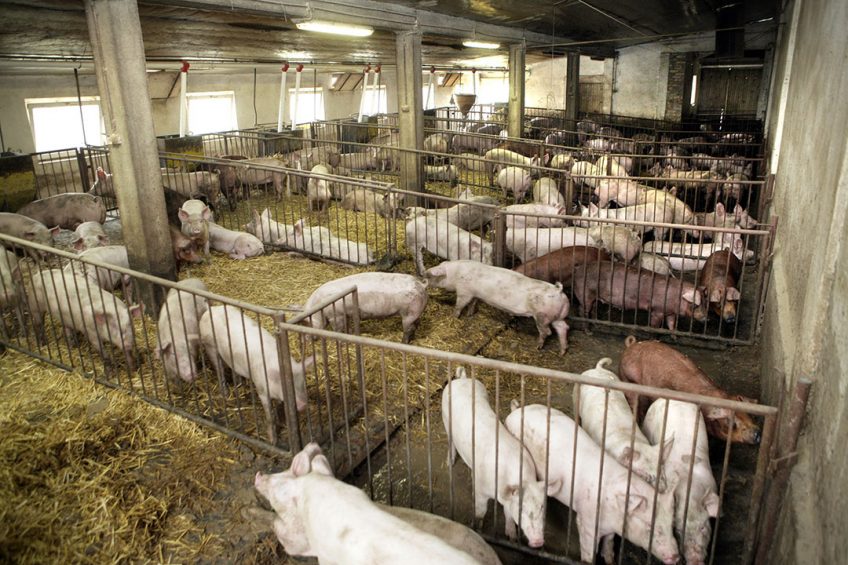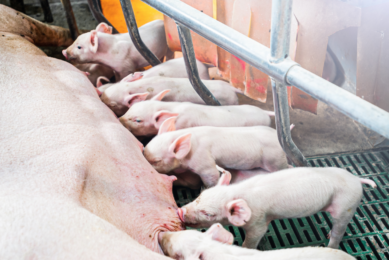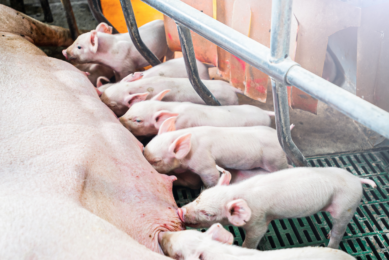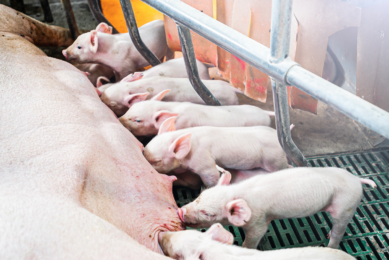Poland: Once thriving, now fragmented

In the mid-1990s, Poland had over 22 million pigs within its borders. Ever since, however, the number has dwindled to barely over 11 million pigs. A fragmented industry is one of the causes of this reduction. What does Poland’s pig industry look like these days?
When looking at the figures alone, there is a strong desire to turn the clock back to about 25 years ago in Poland. Between 1975 and 1995, the total number of pigs in the country varied from year to year, but without exception the total pig inventory was around 20 million pigs. The country reached its zenith with 22.1 million pigs in 1992. Ever since, the numbers have gradually dropped until in the last decade the numbers severely started declining. According to the latest figures of the UN’s Food and Agriculture Organization (FAO) in 2017, the country had 11.4 million pigs. That was up a few hundred thousand from 2016, when Poland had its absolute low since the FAO started counting in 1965: 10.9 million.
Polish pig market analysis
Pork is and has been the country’s most important piece of meat, as can be seen in Table 1. In 2016, on average the Polish consumed 76kg of meat per year, of which 41kg was pork (almost 54% of the total). On the consumer’s side there does not seem to be so much of a problem. That is a tendency that Dr Piotr Szajner of the Polish Institute of Agricultural and Food Economics (IERIGZ) in Warsaw, Poland, noted in his analysis of the Polish pig market which was published in late 2017.
But what is the problem in Poland? In essence, he notes, there are 6 major reasons why after the accession to the European Union in 2004, the Polish sector has not managed to keep up:
- A heavy fragmentation of production in agriculture and the meat industry as well as poorly developed vertical and horizontal integration;
- Slow changes in the production structures and reluctance to cooperate by market players, in particular pig producers and entities processing red meat;
- Slow technological progress in pig production in the conditions of excessive production capacity and its poor utilisation in the meat industry;
- A high price risk associated with considerable fluctuations in cereal and feed prices, resulting in sharp fluctuations in the economic viability of pig production;
- S trong competition in the sector, also due to imports, which increased after Poland’s accession to the EU;
- The competition strategy in the meat industry is based on low prices and reducing the raw material content in final products, which impedes, at the same time, the demand for agricultural raw materials.
Fragmentation & reluctance to cooperate
It is good to zoom in a little bit more into the heavy fragmentation of the Polish pig production market. Dr Szajner writes in his report – which focused on the years between 2000 and 2016 – that pork production underwent structural and modernisation changes since Poland moved away from communism in 1989.
He writes, “The structural changes have been related primarily to concentration of production in large farms. In the analysed period, production was abandoned by the smallest and ineffective farms which were unable to take advantage of economies of scale and generated high costs, in particular high fixed costs. Small farms were unable to carry out necessary investments to meet required veterinary standards.”
Dr Szajner notes in his report that the number of pigs per farm grew between 1996 and 2016, and so the number of pig farms dropped, also see Table 2. Still, he says, “In 2015, the number of farms producing pork decreased to about 280,000, while the average herd size increased to about 45 pigs.” In comparison to other countries within the European Union, he states however, pork production in Poland is “still characterised by a very fragmented structure.”
Exactly how fragmented, he explains with the following figures: About 67% of farms kept 1 to 9 pigs in 2010. Farms with a significant scale of production (>200 head) accounted for only 2.5% of all pork producers, he writes. He adds, “The decisive role in the market is played in fact by large and medium-sized farms (100-199 head) which kept together about 60% of pigs.” The smallest farms, on the other hand, kept only 11% of livestock.
In other EU countries, average pig herd numbers vary between 300 up to 1,100 head per farm, with higher scales of production and high production efficiency, leading to a competitive advantage. Dr Szajner writes: “As a result, Poland imports large numbers of piglets for breeding and significant quantities of meat from Denmark, the Netherlands and Germany.”
Where is pork produced in Poland?
Pork production is spread out over the country, as can be seen in Figure 1. Major production is concentrated in 5 western-central Polish regions which produced a total of 1.6 million tonnes of pork (liveweight) in 2015, which accounted for 67.4% of total production. The Greater Poland province has the greatest share in pork production (about 26%). The other 4 major regions are the provinces Kuyawy-Pomerania, Masovia, Pomerania and Łódz; each have a share of about 10%. Southern and western regions of Poland have the smallest share in pork production, Dr Szajner writes, adding that in the south there are many small farms in which production is not economically viable due to insignificant economies of scale. In the western regions, he notes, there are big farms specialising in crop production, i.e. cereals, rape, sugar beets.
Figure 1 – Regional differences in pig meat production in Poland.

Pork processing: also fragmented
Changes in market conditions, as well as growing requirements such as sanitary and veterinary standards, have resulted in intensive structural and modernisation changes in slaughter and pork processing, Dr Szajner notes in his report. Between 2000 and 2015, the number of large companies (>249 employees) operating in the meat sector increased by 25% to 74. He adds that, where the share of small companies decreased to 70%, the share of the large ones increased by 7%. The largest companies on the Polish pork market are Grupa Kapitałowa Animex Foods (Smithfield Foods) and Grupa Sokołów (Danish Crown).
Trade issues
In 2016, the value of exports of pork products amounted to € 1.4 billion, which accounted for about 6% of the value of Polish exports of agri-food products. Imports amounted to € 1.8 billion and accounted for about 10% of imports of agri-food products. As said, the country entered the EU in 2004; the elimination of customs barriers resulted in rapid growth of the trade in pork in 2003-2016, also see Figure 2. The import growth rate was greater than that of exports, which resulted in an increase in the negative balance, Dr Szajner writes.
Figure 2 – Import of pigs into Poland.

ASF situation in Poland
Complicating the situation for Poland has been the introduction of African Swine Fever. The virus entered the country’s east, in Podlaskie province. Ever since it spread to various provinces, including Lublin and Masovia provinces as well as the area around the capital Warsaw. The spread of the disease has resulted in considerable losses, both direct and indirect. Apart from farms that had to cull animals, Dr Szajner writes that losses can also be due to problems with exports and a risk of a decline in demand for pork on the domestic market.
Pork consumption in Poland
Which brings this article back to where it started: pork consumption. Dr Szajner writes that poultry has shown a dynamic increase in the total meat consumption structure since 2000. Major determinants of changes in the meat consumption model included the price of meat, a growing polarisation of income of Polish people; and health considerations, in particular concerns about negative effects of cholesterol and animal diseases like BSE, avian influenza and ASF.
Dr Szajner adds in his report that while lower-income consumers switched more to poultry, higher-income consumers changed their dietary preferences and substituted red meat with other protein sources (e.g. fish or cheese).
Despite all that, pork remains the basic meat type for Polish consumers. Add to that the vastness of the country and it’s plain to see that if one day the pig production market gets together, anything can happen in Poland.
|



 Poland at a glance
Poland at a glance








